| Share |  |
 | |||
Detoxifying For Better Health - Part 4 - Reducing Toxic Exposure
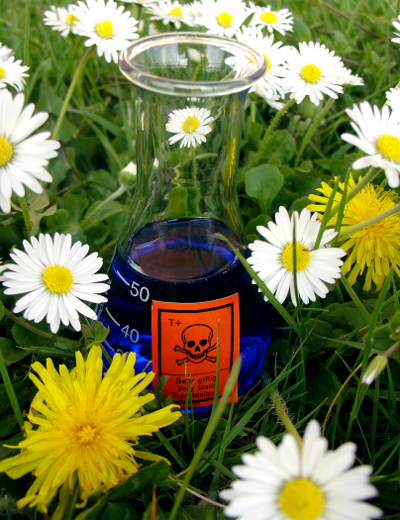 The effects of numerous toxic substances in our environment today places us at a greater risk for health problems than ever before in history. There are toxic substances found in our food, air and water supply. In addition, this is combined with increasing amounts of chemicals contained in products and materials that we commonly use.
The effects of numerous toxic substances in our environment today places us at a greater risk for health problems than ever before in history. There are toxic substances found in our food, air and water supply. In addition, this is combined with increasing amounts of chemicals contained in products and materials that we commonly use.
Before embarking on the process of cleansing and detoxification to improve our health, it only makes sense to first do as much as we can to reduce the amounts of harmful substances entering our bodies.
When we stop and face the unfortunate reality of what we are exposed to in our environment, it may seem too overwhelming to try and rid ourselves of so many toxins. After all, they are everywhere and contained within the great majority of the products we use. Avoiding exposure to all toxic substances is not only impractical, but in some cases it may be an impossible feat.
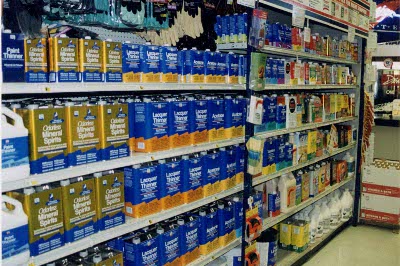 For instance, when it comes to outdoor air pollution, little can be done to avoid contaminated air if we live near highways, industry, or agriculture or should we be subject to second-hand smoke or pesticide treatments in buildings we do not own. Yet plenty of ways do exist that can greatly reduce the number of toxins that we and our families take in if we simply become more aware of toxic sources as well as natural alternatives that can be used instead. With this information in hand, we can then make better choices in regards to what we allow into our homes and bodies.
For instance, when it comes to outdoor air pollution, little can be done to avoid contaminated air if we live near highways, industry, or agriculture or should we be subject to second-hand smoke or pesticide treatments in buildings we do not own. Yet plenty of ways do exist that can greatly reduce the number of toxins that we and our families take in if we simply become more aware of toxic sources as well as natural alternatives that can be used instead. With this information in hand, we can then make better choices in regards to what we allow into our homes and bodies.
Please keep in mind as you read this article that it is the combined effect of so many different sources of toxicity that negatively impacts health. You may not regard some of the examples given for what to avoid as being that dangerous or such a big deal. However, it must be realized that even when a chemical is deemed “safe”, the testing done on it is only with that particular chemical. Few studies are conducted to show the adverse effects on the human body when it is subject to combinations of multiple chemicals. One experiment conducted showed that the potency of individual chemicals is ten times stronger than expected when ten commonly encountered chemicals are combined using only a tenth of each chemical’s active dose. Therefore, the more we reduce our exposure to toxic substances, the less the toxic load will be on our liver and other detoxification organs and the more our bodies can function unhindered to enable us to enjoy the level of health and vitality we desire.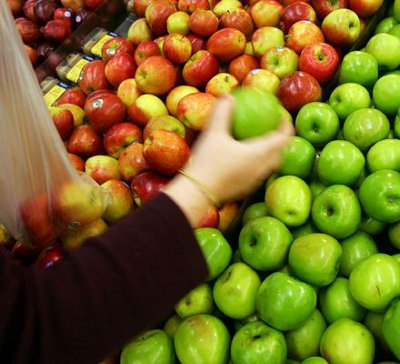 Chemical Laden Food
Chemical Laden Food
Let’s begin with food sources of toxicity. The statistics are staggering in regards to the amount of pesticides, herbicides and other chemicals that taint the crops from which we obtain our food (see “Detoxifying for Better Health – the Problem of Toxicity” for more detailed information on this point). According to the USDA Pesticide Data Program, a number of neurotoxins (chemicals toxic to the brain and nervous system) were found in just one type of insecticide used in agriculture. And who would imagine that those beautiful looking apples we see in the grocery stores are generally sprayed with pesticides 17 times before harvesting? Waxy substances that coat produce can seal in pesticides plus many pesticides are not water-soluble, which means they are not easily washed off. Unfortunately, this also makes them difficult to eliminate from our bodies and contributes to the harmful build-up of toxins over time. 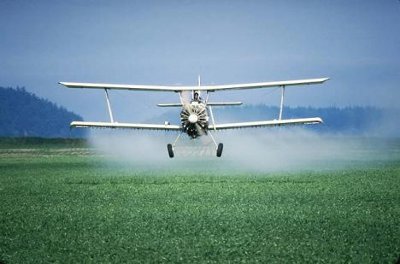 Besides produce, another way of ingesting toxic substances in food is through eating fatty meats of animals fed pesticide-laden feed (toxins settle in fatty tissues). Synthetic hormones and antibiotics given to these same animals also must be broken down by our liver and, therefore, contribute to the toxic load. Eating eggs, milk and milk products from animals fed or injected with these hormones produces the same result.
Besides produce, another way of ingesting toxic substances in food is through eating fatty meats of animals fed pesticide-laden feed (toxins settle in fatty tissues). Synthetic hormones and antibiotics given to these same animals also must be broken down by our liver and, therefore, contribute to the toxic load. Eating eggs, milk and milk products from animals fed or injected with these hormones produces the same result.
Watch Out for Those Additives!
Chemical food additives are another major source of toxins found in foods. Reading food labels is a must if you want to stay away from these toxic ingredients. Chances are that any words that are not easily recognized or pronounced are synthetic or chemical ingredients that only add to the load of substances the body must break down. Many chemical food additives are made from petroleum or coal tar products. Certain bleaching agents still approved by the FDA for use in bleaching flour are so toxic that Germany banned their use in 1958. Some types of additives you particularly want to avoid are:
- Nitrates and nitrites
- Sulfites (sulfer dioxide)Benzoic acid (or sodium benzoate)
- BHT (butylated hydroxytoluene)
- BHA (butylated hydroxyanisole)
- Propylene glycol
- Flavor enhancers – particularly those containing MSG
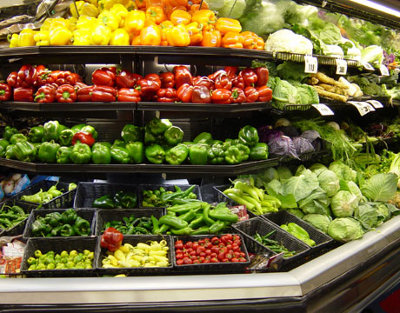
- Ingredients described as “natural flavoring” or “natural coloring”
- Synthetic coloring agents
- Ripening agents (ethylene gas)
- Artificial sweeteners – especially aspartame, a known excito-toxin
The Best Way to Avoid Toxins in Foods
The only way to be sure that foods you purchase are not tainted with chemicals is to obtain them from organic sources. Organic food crops are grown without the use of herbicides, insecticides, fungicides, synthetic fertilizers, artificial ripening processes and the addition of toxic additives. Moreover, the nutritional value is twice that of commercially produced food according to a study published in the Journal of Applied Nutrition. Granted, it is not always easy or affordable to buy all organic produce but the more you can obtain, the better off you will be health wise.
Certain produce items are more protected from pesticides while others absorb pesticides more readily. The Environmental Working Group’s 2010 list of most recommended produce items to obtain from organic sources due to high pesticide content are: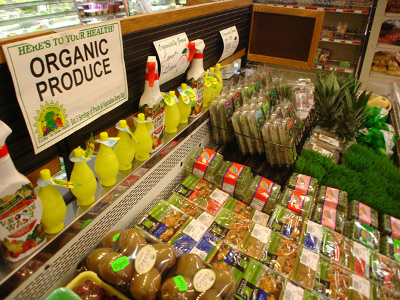
- Celery
- Peaches
- Strawberries
- Apples
- Blueberries
- Nectarines
- Bell Peppers
- Spinach
- Cherries
- Kale/Collard
- Greens
- Potatoes
- Grapes (Imported)
Produce items considered to be the safest to obtain from non-organic sources, which have the least pesticide residue are:
- Onions
- Avocado
- Sweet Corn
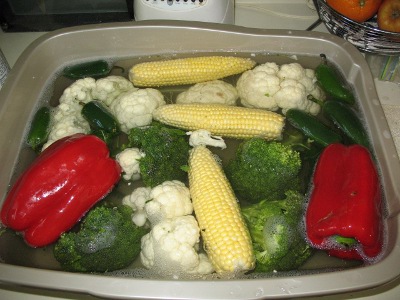
- Pineapple
- Mangos
- Sweet Peas
- Asparagus
- Kiwi
- Cabbage
- Eggplant
- Cantaloupe
- Watermelon
- Grapefruit
- Sweet Potato
- Honeydew
- Melon
If you can’t buy organic produce, at least thoroughly wash regular produce items with natural products designed for that purpose (for more information on washing fruits and vegetables, I would refer you to my article, “Healthy Cooking and Food Care Tips – Washing Fruits and Vegetables”). In addition, try to avoid buying imported produce, as it may have been grown with pesticides so dangerous that they are outlawed in this country.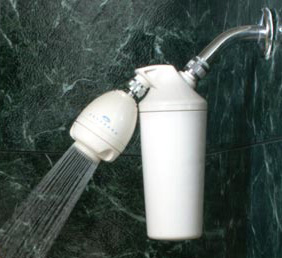 Drink Toxic Free Water
Drink Toxic Free Water
Hundreds of chemicals from industrial waste, pesticides from agricultural runoff, heavy metals, pharmaceutical drugs (http://www.ewg.org/node/26128) and other pollutants are either dumped or seep into rivers, lakes and other bodies of water. Not only are municipal water treatment plants unable to completely remove these toxic chemicals from water supplies but chemical substances used in treating the water pose their own health risks.
Chlorine, in particular, combines with organic matter in the water to form carcinogenic chemicals such as trihalomethanes and chloroform, which cause free radical damage associated with cardiovascular disease and cancer. Showering with chlorinated water actually exposes a person to six times more chloroform than what would be absorbed into the body from drinking the water.
Fluoride, a toxic by-product of a by-product of copper, iron and aluminum manufacturing, is another chemical added to water that increases the risk of cancer and other diseases. According to research conducted through the National Cancer Institute, more cancer deaths are caused by fluoride than any other chemical. Also, the function of numerous enzymes in the body as well as vitamins and minerals is inhibited by the presence of fluoride.
To avoid taking into your body any number of toxic substances through drinking, preparing foods or bathing, the purchase of a high quality water-purifying filter is a good investment to protect and improve your health. When away from home, it is safest to purchase quality bottled water to drink. For less than a hundred dollars, a shower filter may be obtained that will remove all the chlorine and other chemicals from water that is absorbed into your body through the skin from bathing. For more information about the different kinds of filtering systems and water for purchase, I would advise you to read my article “The Wonders of Water – Part 2”. 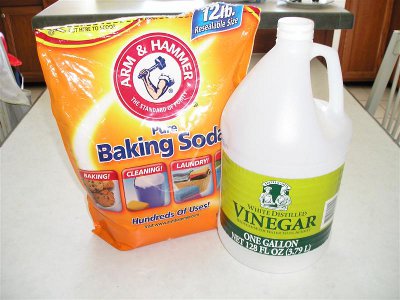
Using Toxic Free Cleaning Products
Toxic substances abound in the myriad of household cleaning products available today. Natural substitutes you can make or purchase can do the job of these products while significantly reducing the number of toxins to which you and your family members are exposed. To get an idea of what chemicals may be lurking in cleaning products commonly used today, check out this list of products and substances they contain taken from the book Purify Your Home Without Poison by Debra Lynn Dadd.
Toxic Chemicals Found in Common Household Products
|
Cleaning Product |
Hazardous Substances |
|
Air freshener |
Naphthalene, phenol, cresol, ethanol, xylene, formaldehyde |
|
All-purpose cleaner |
Ammonia, detergents, artificial fragrances, aerosol propellants |
|
Ammonia |
Ammonia |
|
Basin, tub, and tile cleaner |
Detergents, artificial fragrances, aerosol propellants, chlorine |
|
Bleach |
Chlorine |
|
Carpet shampoo |
Perchloroethylene, naphthalene, ethanol, ammonia, detergents, artificial fragrance |
|
Dishwashing detergent |
Chlorine |
|
Dishwashing liquid |
Detergents, artificial fragrance, artificial color, ammonia |
|
Disinfectant |
Cresol, phenol, ethanol, formaldehyde, ammonia, chlorine |
|
Drain cleaner |
Lye, ammonia, petroleum distillates |
|
Fabric softener |
Artificial fragrances |
|
Floor/furniture polish |
Phenol, nitrobenzene, acrylonitrile, ammonia, detergents, artificial fragrances, naphthalene, petroleum distillates, aerosol propellants |
|
Laundry detergents |
Detergents, bleaches, artificial fragrances |
|
Mould and mildew cleaner |
Phenol, kerosene, pentachlorophenol, formaldehyde |
|
Oven Cleaner |
Lye, ammonia, aerosol propellants |
|
Scouring powder (chlorinated) |
Chlorine, detergents; talc may be contaminated with asbestos |
|
Silver polish |
Ammonia, petroleum distillates |
|
Spot remover |
Perchloroethylene |
|
Window cleaner |
Ammonia, artificial colors, aerosol propellant |
Not only do many of these products give off toxic fumes when used but vapors from them may also remain in the air for days. Fortunately, alternative natural sources are becoming more commonplace. Be warned however, that not every product advertised “environmentally friendly” is truly a natural product free of all harmful chemicals. Brands that are particularly good are “Orange Glow Products”, “Soapworks”, “Seventh Generation”, “Ecover” and “Earth Friendly” products. If you are unable to purchase such products locally, they may be ordered online at sites such as www.ecomall.com, www.greenmarketplace.com or www.healthyenvironments.com. You can also make your own using basic non-toxic ingredients such as baking soda, vinegar, hydrogen peroxide, borax, and essential oils. Here’s one of many websites that give ideas and recipes for creating your own natural products: http://eartheasy.com/live_nontoxic_solutions.htm
Toxins We Inhale 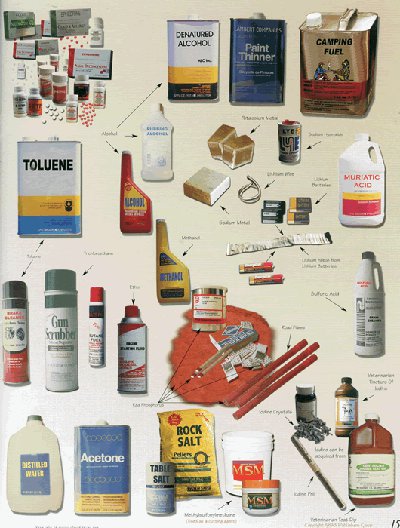
Unfortunately, anything you breathe ends up in your blood and eventually reaches the cells of your body. In addition to fumes from the use of various household cleaners and aerosol products, people living in homes and working in offices are subject to outgassing (the process by which a solid releases gas) from carpets (as well as carpet padding and glues), building materials that contain formaldehyde, synthetic furniture, upholstery fabrics treated with flame retardants and/or stain resistant substances, bedding, curtains, office machines and supplies, and recycled air.
Solvents found in paint, paint thinners, varnishes, caulk, adhesives and glues add to toxicity from inhaling substances used in and around the home. Paints, for instance, may contain cadmium, mercury, chlorine, benzene, sulfur, formaldehyde and xylene. Many of these chemicals have been found in the bodies of an estimated 90% of Americans. Studies show that those who paint homes for a living have 40% higher cancer rates than the average person. To reduce toxicity from paints, either buy non-toxic paint or add 40 drops of essential oil to a gallon of paint before using it. Running a heater for 24 hours after painting and airing out the area as much as possible also helps with outgassing.
Burning candles that are often made with paraffin (a petroleum by-product) can also be toxic, especially with metallic wicks that contain lead. According to research published in the Journal of the American Medical Association, burning lead candles for three hours results in toxic levels that are 10 to 36 times that of EPA standards. Make sure that you use candles made from plant wax or beeswax that are scented with 100% pure essential oils rather than synthetic fragrances. Also, air freshener products made with pure essential oils should be used instead of standard air freshener sprays that contain an array of toxic chemicals.
Fumes from solvents used in dry cleaning, which are designed to break down fats in the clothing stains, unfortunately can dissolve fats in the myelin sheaths that coat our nerves when they get into the body. For this reason, remove the plastic and air out clothes that return from dry cleaning before placing them in your closet.
Other steps you can take to prevent or reduce the harmful effects from toxins that permeate your air space are:
- Allow adequate ventilation when using toxic products

- Air out your home on a regular basis
- Regularly change air filters in addition to cleaning ducts and vents in central heating and air conditioning systems
- Install an air purifier
- Add houseplants to absorb airborne toxins and clear toxic chemicals out of the air (plants effective in removing man-made pollutants in addition to carbon dioxide from the air are peace lilies, gerber daisies, philodendron, spider plants, fiscus, chrysanthemum, poinsettia and English ivy. For more info, go to http://www.wolvertonenvironmental.com
- Obtain more natural furnishings made of wood, cotton and wool that are not chemically treated (for ideas on natural furnishings and building materials, check out these websites: www.healthyeverything.com, www.naturalhomemagazine.com)
Lawn and garden products also contain very toxic chemicals that can be very harmful when inhaled. If you cannot locate organic fertilizers, pest controls and other natural lawn and garden products, these websites may be of help. www.gardensalive.com. www.organicgardens.com or www.naturalgardening.com.
Avoiding Heavy Metal Toxicity
Heavy metal toxicity is an excessive build-up of metals in the body that can interfere with normal functions and produce various symptoms such as such as fatigue, headache, depression, diminished memory, neurological disorders and anemia to name a few. A number of degenerative conditions such as MS, Parkinson’s, cancer, fibromyalgia, and chronic fatigue significantly improve when the body is free of heavy metal toxicity. A few of the more common types of heavy metals that tend to accumulate and cause an assortment of health problems are:
Arsenic – found in pesticides, laundry aids, smog, cigarette smoke, table salt, seafood, contaminated drinking water
Cadmium – found in nickel/cadmium batteries, plastics, metal food containers, pesticides, fungicides, medications, instant coffee and tea. It tends to replace zinc in the liver and kidneys and lowers levels of T-cells and can eventually lead to lung and prostrate cancer, heart disease, kidney damage and hypertension.
Lead – found in lead-based paint, hair products, food from lead-soldered cans, solder in water pipes imported ceramic products, lead soder in water pipes. Lead tends to be absorbed more readily by children and excessive lead build-up is believed to be associated with ADD, hyperactivity and delinquency.
Aluminum – found in deodorants, antacids, baking powder, non-dairy creamers, processed cheese, and unfiltered tap water as well as from the use of aluminum pans, cans, and foil. An accumulation of this element (although not technically a heavy metal) produces similar toxic symptoms that affect the brain (Alzheimer’s, impaired memory, seizures, head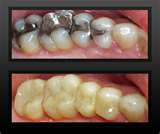 aches) as well as impaired liver and kidney function, weakened bones and muscles and other symptoms.
aches) as well as impaired liver and kidney function, weakened bones and muscles and other symptoms.
Mercury – more toxic than lead, cadmium, and arsenic, this metal is the third most toxic substance known to mankind according to the Agency for Toxic Substances and Disease Registry. “Silver” dental fillings, comprised of at least 50% mercury, are the most prevalent source of mercury toxicity. Vapors of mercury that are commonly released during the process of chewing and brushing invade the entire body and concentrate in the nervous system where they cause cognitive disorders, fatigue, immune suppression, muscle weakness and other disorders. According to Dr. Don Colbert, a typical filling contains 250,000 mcg of mercury and releases 10 mcg of mercury per day.
Hair analysis and other testing may be conducted to reveal the presence and degree of mercury toxicity. Biological dentists are specially trained to remove fillings containing mercury using special protection mechanisms to ensure that released vapors do not cause further problems. After removal of mercury fillings, it is vital to follow an oral chelation program using supplements that will safely enable mercury to be eliminated from the tissues of the body. To locate such a dentist in your area, visit one of these websites - www.icimed.com or www.iaomt.org or call the Environmental Dental Association at 800-388-8124.
Contaminated fish caught in waters surrounding highly industrialized areas in addition to larger ocean fish such as tuna, swordfish and shark are further sources of unsafe levels of mercury. Although the EPA cautions not to eat more than 5-7 mcg of mercury per day, the FDA permits as much as 480 mcg in a single pound of fish. Other sources of mercury are inks, laxatives, paints, latex, plastics, polishes, fabric softeners, solvents and certain medications.
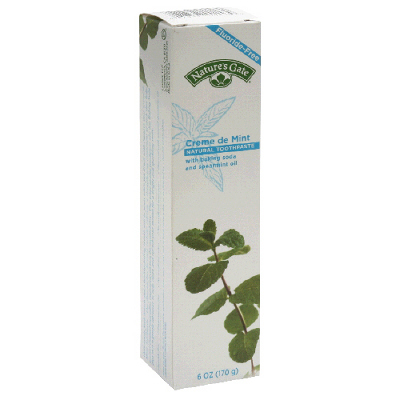 Choose Less Toxic Personal Care Products
Choose Less Toxic Personal Care Products
Anytime chemicals come in contact with the skin, they are absorbed into the body. An enormous amount of toxic chemicals in the form of artificial colors, synthetic fragrances, petroleum products, emulsifiers, preservatives and solvents are used in most popular brands of cosmetics. For instance, a carcinogen (cancer causing substance) known as nitrosamine that forms from the combination of two potent chemicals used in cosmetics (dietanolamine (DEA) and triethanolamine (TEA), was found in 37 percent of make-ups that were tested by the FDA. In her book, The Four-Week Ultimate Body Detox Plan, Michelle Cook provides a list of what she considers the ten most toxic ingredients found in cosmetics.
- Imidazolidinyl urea and diazolidinyl urea – common preservatives that can release formaldehyde at just over 100Ëš F.
- Methyl, propyl, putyl, and ethyl paraben – used to extend shelf life and inhibit microbial growth
- Petrolatum (mineral oil and jelly) - can produce sun damage and interferes with the body’s own natural moisturizing mechanisms
- Propylene glycol – synthetic petrochemical mix used as an emulsifier
- PVP/VA copolymer – petroleum-derived chemical used in hairsprays, wave sets and other cosmetics
- Sodium lauryl sulfate – synthetic used in shampoos and soaps to make them foam that is a known mutagen (can alter the body’s cellular genetic material)
- Stearalkoniujm chloride – used in hair conditioners an creams
- Synthetic colors labeled as FD&C or D & C – synthetic colors often obtained from coal tar that are believed to be cancer causing agents
- “Fragrance” – synthetic substance that may contain as many as 400 chemical substances.
- Triethanolamine (TEA) – a base for cleansers use to adjust acid-alkaline balance (pH)
In addition, she points out that 95 percent of chemicals used in perfumes and colognes are by-products of the petroleum industry that cannot be used in vehicles or for other industrial uses. Common chemicals found in perfumes are ethanol, benzaldehyde, benzyl acetate, a-pinene, acetone, benzyl alcohol, ethyla acetate, linalook, a-terpinene, methylene chloride, a-terpineol, camphor, and limonene. Other personal care products you may want find natural substitutes for are: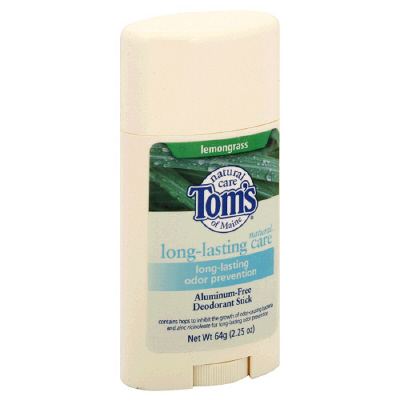
- Toothpaste – contains cancer causing and other harmful substances including fluoride. The premise that fluoride strengthens teeth and prevents cavities is disproven by numerous research organizations, including the National Institute for Dental Research. www.icnr.com/articles/national-fluoride-tooth-decay-study.html. Fluoride also occupies iodine receptor sites in the body, which can contribute to the development of thyroid disease (see my article “Health Gain – Weight Loss – The Thyroid Factor” for more information on this fact).
- Deodorants containing aluminum
- Bleached feminine products which leave a residue of dioxin that is linked with immune disorders, endometriosis and cancer of the reproductive system
- Insect repellant that contains DEET
Concluding Thoughts
Although the sources of toxins covered in this article are by no means exhaustive, I hope the information given will help you become more aware of potentially harmful toxins in the products that you use and ingest. It may indeed seem overwhelming to attempt avoiding toxins from so many sources. However, once you become familiar with what potentially harmful substances are in your diet or environment, you can then begin to replace those products with safer natural alternatives, as you are able. Taking steps, however gradual, to ease the toxic load on your body will bolster the detoxification process and increase your level of health.
Sources:
- The Detox Solution by Dr. Patricia Fitzgerald
- Toxic Relief by Dr. Don Colbert
- The Seven Pillars of Health by Dr. Don Colbert
- The 4-Week Ultimate Body Detox Plan by Michelle Schoffro Cook
- Coming Clean by Steven Horne
- http://static.foodnews.org/pdf/EWG-shoppers-guide.pdf
Copyright © 2008-2015 Lucinda Bedogne, CNHP, CNC
Reader Comments...
| 2010-12-06 06:45:37 "Linda, please contact me by this e-mail. I have just been dianosed with hyperthyroidism. I really would love to know if there is anything I can be doing naturally to help me!!!! Please Help!!! Sincerly, " - Theresa |
Post Your Comment...
|
|
||||||||||||



